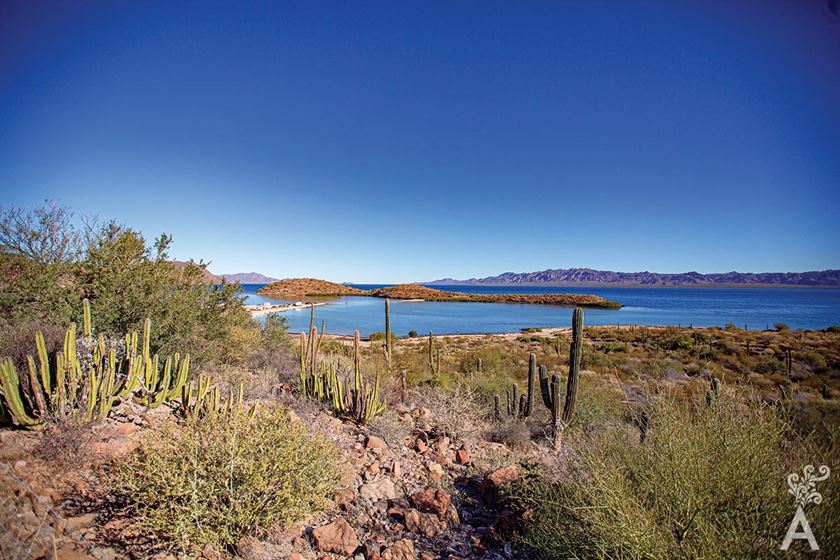Ethnographic tourism at the Rock Oasis
John left one day from Southern California in his motor home. He was accompanied by his wife and two of his children. They started their journey by crossing the border at Tijuana and took the so-called scenic route that leads to Bella Ensenada, a city full of tourist traffic, especially on weekends. From there, they traveled to a village called Rosario de Abajo to enjoy a good breakfast or lunch.
As a good ethnographer, he began his odyssey at the Rock Oasis, the same location that has attracted so many visitors beginning with pioneers who visited by land, sea and air.
[two_first]The principle behind ethnographic tourism is to link two different cultures (those of the visitor and the host) so they are deeply connected to the traditions, customs and culture of the people”.
Through his teachings and passage through Rosario de Abajo, John and his family sought to live experiences of the unknown cultural life, to learn the way in which the local population perceives life and how it copes (how they think, how they feel, how they act). It is a kind of anthropological practice without being a professional anthropologist; observing and checking what is said and done.
Throughout the history of travel, perhaps without knowing it, the traveler has acted as an ethnographer in the destinations to which he has arrived, understanding, interpreting and portraying these different life forms, using written memories and photographs, including home movies, which will then be shared with the world. The testimonies are eventually reproduced and circulated.
[/two_first][two_second]

[/two_second]
From Rosario de Abajo, they went straight to the desert, then along the coastlines, beaches, and mountains before arriving at Guerrero Negro, the population that is halfway along the Baja California peninsula. Next was the great Vizcaino, traveling its coasts and crossing the lagoons, where the gray whale and thousands of migratory birds arrive every year. On its plains, the huge cardones grow. The family even traveled to the cave paintings in the Sierra San Francisco, cultural testimonies of the past that survive to this day.
When crossing the peninsula, John traveled inland to share his knowledge of the mountains of this region. There was a possibility for appreciating the rocks exposed to the sun and the wind, burned ocher and with cracks of darkness. In every sense, a true oasis of rock.
It is the continental volcanic mass with its extensions, intimate corners, elevation changes between mountains and seas that make this calcinated border a landscape like no other. Crossing this area takes one to beautiful San Ignacio and interactions with a population imbued with an unimaginable Sudcalifornian flavor and expressed in a folklore that is tinged with peace and tranquility.
A little farther south in Sudcalifornia, the Sierra de la Giganta and Guadalupe form an almost literary and visual portrait describing the mysteries of the recent past of the life of the Cochimies (former inhabitants of the area) and, of course, the missionary life and its influence on the life of ranchers in the 21st century.
[two_first]John and family arrived one morning at another wonderful oasis, Mulege. Like San Ignacio, the residents interact with the river that crosses the town borders and intertwines with the waters of the Gulf of California.
They left Mulege and went south. Here they found one of the most beautiful landscapes in the area. Conception Bay is a place with a gentle sea. The colors and the diversity of whimsical forms make the islets appear to be sails on the waters of conception.
And finally, the last place of this majestic tour: Santiago and its rancherias. In 1724, the mission of Santiago was established on this site but abandoned in 1795. In 1734, a rebellion of indigenous people killed the parish priest. The current building was constructed in 1952 and represents that historic past.
[/two_first][two_second]

[/two_second]
“There is a ranch near the blue water ranch, called the mission, where our ancestors told us there was a church, and we suppose it was the old mission.” Doña Teresa.
The past of this village, like many others, surely could have been better or worse, depending on your point of view. At present, we can point out that it is an important agricultural and livestock area in the municipality of Los Cabos, about 30 miles from San Jose del Cabo.
The rancherias of tourist importance in this beautiful perfumed land are the Hot Springs, May Sun, Santa Rita and the San Dionisio estate. It is a picturesque area where the friendly populations willingly coexist and exchange a sense of hospitality with the Southern California rancher.
John and his family, as well as hundreds of travelers over the past 70 years, have crossed this perfumed land and found the space to feed the soul and nurture the desire to express their experiences in words, photographs, and paintings.
“When you embark on your trip, interact with the heritage created by the ancestors and preserved through generations up to the present. Explore spaces used for various purposes, buildings of diverse architecture, goods and furniture, anything related to everyday life. In addition, learn about their habits and customs, their work, their trades, as well as their rules of social coexistence and values, their ways of acting and behaving, their dress and eating practices. Also, don’t miss any experience connected to nature, humans and the universe and related through traditions and oral expressions, religious practices, rituals, symbolic events, language, parties, music, dance, theater, crafts and more. All of them are possessed only by their natural owners but can be acquired through meetings and presentations. If you experiment with all this, surely it will nurture your entire existence.” (John)








